Stained Concrete
Benefits of Stained Concrete
Stain Types and Colors
Free Quote

Acid-Based Chemical Stains
Acid-based stains work by penetrating the concrete and creating a chemical reaction that can result in beautiful colors with the look of marble or granite. If you want your flooring to resemble the look of wood, acid-based stains are known for being used in this process as well. These floors offer a beautiful design but are limited to earthy tones. While the color selection may be limited to more natural colors, there is no escaping the true beauty of these floors. These floors are personal to you not only in the color choice but because the design is dependent on the reaction the stain has to the concrete, the exact floor won’t be able to be duplicated.
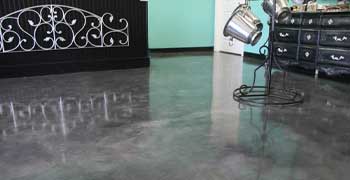
Water-Based Stains
Water based stains come in a full spectrum of colors! No color is too bold to choose with these stains and colors can even be mixed to create more color options. Water-based stains give permanent color by penetrating the surface of the concrete unlike paints that simply sit on top. Water-based stains are top choice for those who like predictability. With acid-based stains the color and design is left up to the chemical reaction that takes place, but water-based stains are better controlled.
While earth tones like brown and grey are the most popular, there are unlimited colors available so there should be no fear in going bold and dramatic!
Call For a Quote:
844-482-8330
Process of Staining Concrete Flooring
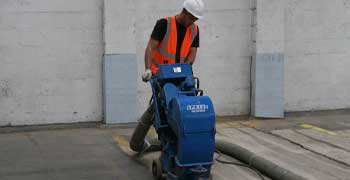
Preparing the Surface
AS with most concrete related jobs, the first step is preparing the surface for the stain. Preparation is incredibly important when it comes to staining concrete because these stains are translucent which means if there is dirt and imperfection in your concrete they will stick out like a sore thumb in the finished product. You can properly prepare the surface by either using a specialty cleaner or mechanically grinding the surface. Remember that this step is crucial and will dramatically impact the finished flooring.
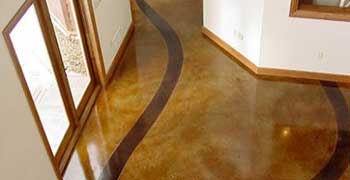
Add Protection
Once the process is done and the stain has been allowed to dry overnight or longer, you can apply a protective coat. Using a concrete sealer will not only allow the color and stain to last longer, but it will protect your concrete as well. You can apply two coats of concrete sealer rather than one and a floor sealer or wax can be used to finish up for added protection against scuffs and scratches.
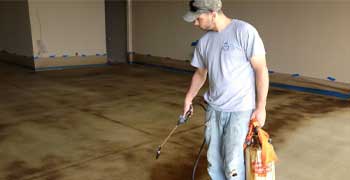
Applying the Stain
When applying the stain itself you’ll want to mask off any areas you don’t want the stain to effect such as door frames and walls. Once this is done you mix your stain to the needed ratio as recommended by the manufacturer. Once it is all mixed, apply the stain with a sprayer or brush. This is your first coat and it should be allowed to dry anywhere from 15-20 minutes. This should give you a good idea of where you staind color wise and you can decide if you want another coat depending on your desired look. It is recommended a few hours is left in between coats, but you can repeat the application if a more intense color is desired.
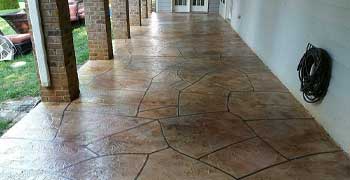
Clean and Neutralize
After the stain is applied and you’re happy with the intensity of the color, it’s time to clean up and neutralize the stain. First you start by rinsing the concrete until the water runs clear. Once the water runs clear you can neutralize the stain. This is only necessary if an acid-based stain was used because the water based stain won’t need it. You can neutralize your stain by using T.S.P., baking soda, or ammonia. After this step is complete all you need to do is use a soft bristled brush to scrub any remaining residue and give their surface a final rinse.
Call For a Quote:
844-482-8330

